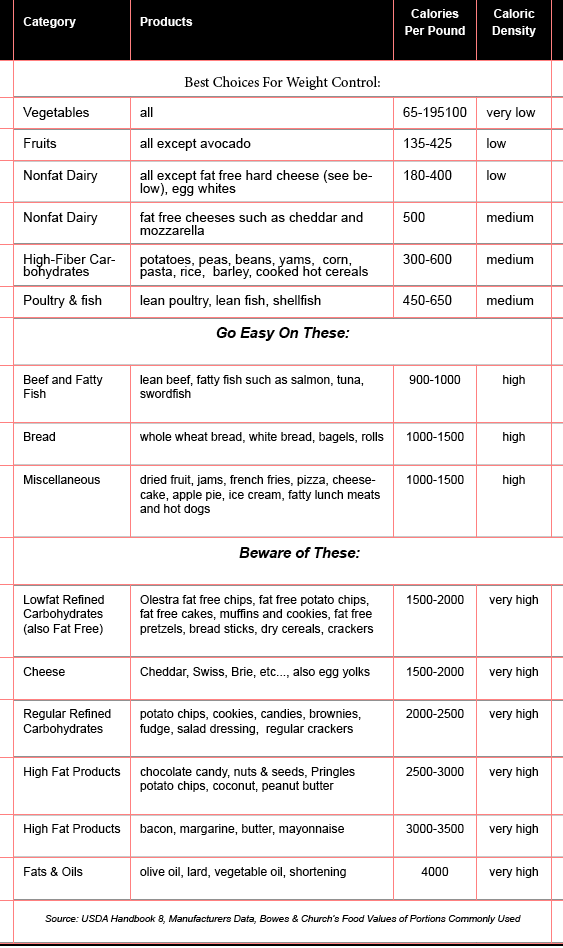Percent of Fat Calories Is Not Everything If You Are Trying To Lose Weight!
Americans are getting fatter since the introduction of numerous reduced-fat and fat-free food products. While decreased smoking and increased sedentary behavior are factors in the “fattening” of America, the drop in percent of fat calories is not having the expected results. Americans are gaining excess weight because they are eating more calories (mostly carbohydrate but a little more fat too) and burning even fewer calories.One obvious possibility is a lack of awareness of caloric density by most consumers. Too much focus has been on reducing fat consumption with fat free products rather than eating more whole grains, fruits, vegetables and beans.Since fat has over twice the calories of sugar, starch or protein, increasing dietary fat in the diet will almost always increase caloric density. But not all high fat foods have more concentrated calories than all low fat foods. For example, olives (over 80% fat calories) ounce for ounce have only about one fourth the calories of fat free cookies or fat free potato chips (440 versus 1600 calories per pound)! Adding three tablespoons of fat-free chocolate syrup to a glass of whole milk doubles the calories (from 160 to 320) but cuts the % of fat calories from 50% to only 25%.The caloric density of fat free cookies, cakes and salty snack foods is quite high (1200 to 1700 calories per pound) compared to a big salad containing a few sunflower seeds, a couple slices of avocado or a little olive oil (only 300 calories per pound but 50% calories from fat!). Foods with more than 1000 calories per pound are calorically dense while those below 400 calories per pound have a low caloric density regardless of their % of fat calories.In one study that examined short term satiety of various foods, the researchers observed satiety correlated positively with water, fiber and protein content whereas fat was negatively correlated with satiety. In other words, you have to eat more calories from foods high in fat and or refined carbohydrates to feel full or satiated.Another study found that people ate dramatically fewer calories with high-fiber, lowfat foods versus typical American foods that are high in fat and low in fiber - even when they were allowed to eat until they felt full (3000 versus 1570 calories per day). In this study the satiety ratings of the high and low calorie density diets was similar as was food acceptance, despite average calorie intake being cut nearly 50%. The high calorie density diet had 681 calories per pound and the low calorie dense diet had only 318 calories per pound.Returning to a less processed, refined diet with far less concentrated calories and increasing activity may be necessary for people to lose weight and keep it off without chronic hunger.The best way to reduce caloric density is to cut dietary fat by reducing fatty meats and dairy products and refined fats and oils in salad dressings, fried foods and most desserts. It is also important to reduce sugar and other refined and processed high carbohydrate foods such as bread and bakery products, dry cereals, soft drinks, pastries, salty snack foods and candy.At the same time, an increase in the amount of fruits, vegetables, minimally processed starchy foods like potatoes, rice, pasta, corn and beans is helpful. Two servings a day of nonfat dairy products and modest amounts of fish, poultry and very lean red meats or vegetarian alternatives would round out a nutritionally balanced low calorie dense diet that may well prove ideal for the prevention and treatment of obesity and other diseases of affluence, including diabetes, heart disease and cancer.See chart showing best choices for low caloric density below.By Jay Kenney, PhD, RD, FACN.


